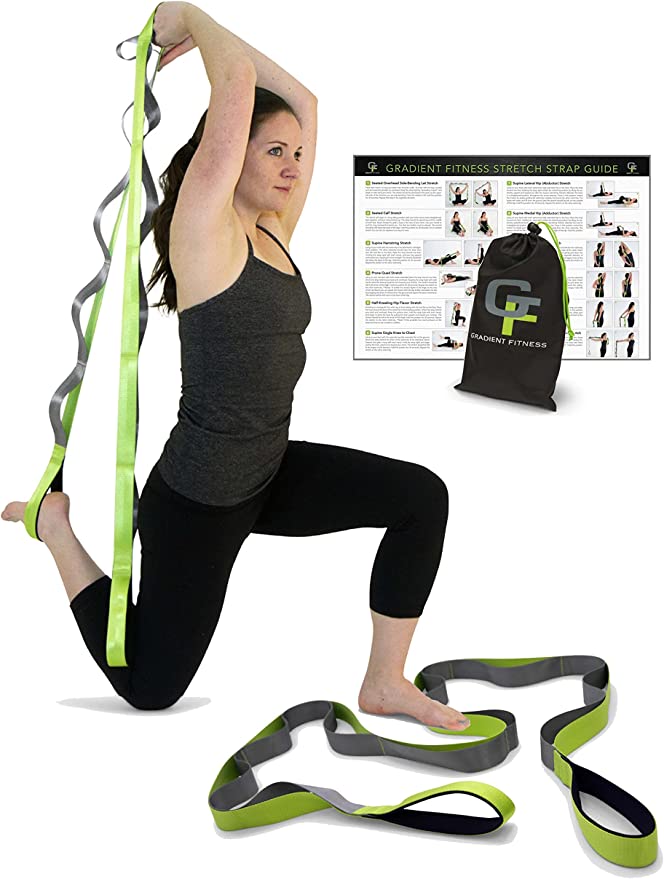1. Why Stretching After a Workout Matters for Your Overall Fitness
Stretching after a workout is not just a simple afterthought—it plays a crucial role in your overall fitness. When you exercise, your muscles contract and tighten, and stretching helps counteract this by promoting muscle relaxation and restoring balance to your body. By incorporating stretching into your post-workout routine, you provide your muscles with the opportunity to recover and prevent potential imbalances or muscle tightness. It also helps in gradually bringing down your heart rate, aiding in a smooth transition from an intense workout to a resting state.
2. The Numerous Benefits of Stretching after a Workout
Stretching after a workout offers a wide range of benefits that can greatly enhance your overall fitness journey. One of the key benefits is improved flexibility and range of motion. By elongating the muscles through stretching, you increase their extensibility, allowing for a greater range of motion in your joints. This is particularly important for activities that require a wide range of motion, such as dancing, gymnastics, and martial arts.
Additionally, stretching after a workout increases blood flow to the muscles, delivering essential nutrients and oxygen that aid in muscle recovery and repair. It also helps reduce muscle soreness and stiffness, minimizing post-workout discomfort. Regular stretching can contribute to improved athletic performance by enhancing muscle activation, allowing for more efficient movement patterns during exercises and sports activities.
Stretching after a workout is not just beneficial for the body; it also promotes relaxation and stress relief. By incorporating deep breathing and mindfulness into your stretching routine, you create a holistic experience that benefits both your physical and mental well-being.
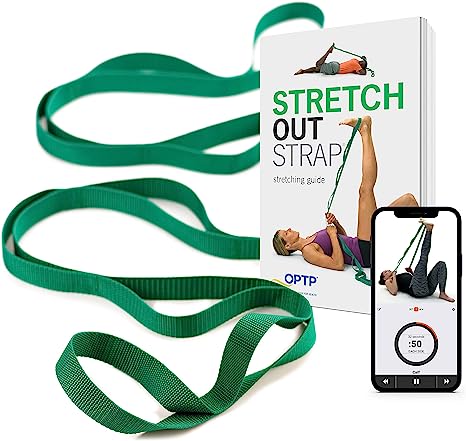
The Original Stretch Out Strap with Exercise Book – Made in the USA by OPTP – Top Choice of Physical Therapists & Athletic Trainers
3. Exploring Different Types of Stretching Exercises
When it comes to stretching, there are various techniques you can incorporate into your post-workout routine. One common type is static stretching, where you hold a stretch for a certain period without movement. This is effective for increasing overall flexibility and promoting relaxation. Dynamic stretching, on the other hand, involves incorporating controlled movements while stretching. This type of stretching is particularly useful as part of a warm-up routine, as it helps prepare the body for more vigorous exercise.
Another technique is proprioceptive neuromuscular facilitation (PNF) stretching, which combines stretching and contracting muscles to improve flexibility. This type of stretching often requires a partner or assistance from a professional. Active isolated stretching focuses on holding a stretch for a short duration, then releasing and repeating. It is useful for targeting specific muscles and improving overall flexibility.
By incorporating a combination of these stretching techniques into your post-workout routine, you can reap the maximum benefits and address the specific needs of your muscles.
4. Guidelines for an Effective Post-Workout Stretching Routine
To ensure that your post-workout stretching routine is effective, follow these guidelines:
- Begin by stretching all major muscle groups, including the upper and lower body.
- Hold each stretch for 15 to 30 seconds, allowing enough time for the muscles to elongate and relax.
- While stretching, focus on deep breathing and consciously relax the muscles being stretched.
- Avoid bouncing or jerking movements during stretches, as this can lead to injury.
- Gradually increase the intensity of the stretch without pushing beyond your comfort zone.
- Modify stretches to suit your fitness level and body’s needs, ensuring you’re performing them correctly to avoid any strain or injury.
By following these guidelines, you can make the most out of your post-workout stretching routine and optimize the benefits for your body.
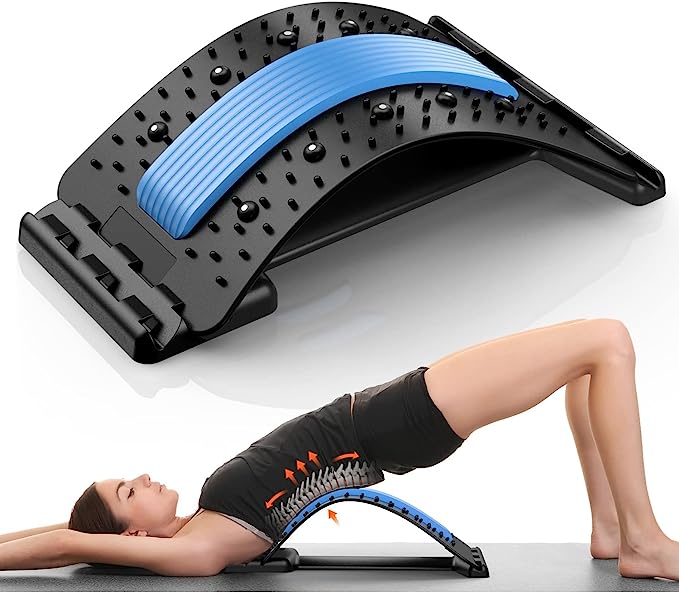
AQIQQ Back Stretcher, Multi-Level Back Cracker, Upper & Lower Back Pain Relief Device for Herniated Disc, Sciatica, Scoliosis.
5. Best Stretches for Targeting Different Muscle Groups
To effectively stretch different muscle groups, here are some recommended stretches:
- For the hamstrings, try standing toe touches or seated hamstring stretches.
- To target the quadriceps, perform standing quad stretches or lying quad stretches.
- Stretch the calves by doing standing calf stretches or wall calf stretches.
- For the chest and shoulders, incorporate doorway stretches or shoulder rolls.
- To stretch the back, engage in cat-cow stretches or seated forward bends.
- Target the hips and glutes with pigeon poses or seated figure-four stretches.
By incorporating these stretches into your post-workout routine, you can address specific muscle groups and promote overall flexibility and muscle relaxation.
6. Common Mistakes to Avoid When Stretching After a Workout
While stretching after a workout is beneficial, it’s important to avoid common mistakes that can hinder your progress or even lead to injury. Here are some mistakes to avoid:
- Skipping stretching altogether: Even if you’re short on time, dedicating a few minutes to stretching can make a significant difference in your post-workout recovery.
- Stretching cold muscles: Ensure your muscles are warmed up before stretching to prevent strains or injuries. Consider performing a brief warm-up routine before starting your stretching exercises.
- Overstretching or forcing a stretch: It’s crucial to listen to your body and avoid pushing beyond your limits. Overstretching can lead to muscle strains or tears.
- Holding your breath during stretches: Remember to breathe deeply and evenly while stretching. Holding your breath can lead to muscle tension and discomfort.
- Neglecting proper form and alignment: Focus on maintaining proper form and alignment during each stretch. This ensures that you are targeting the intended muscle groups and reducing the risk of injury.
- Ignoring pain or discomfort during stretches: Stretching should never be painful. If you experience any sharp or intense pain, stop the stretch and consult a healthcare professional.
By being mindful of these common mistakes and practicing proper stretching techniques, you can avoid potential setbacks and make the most of your post-workout stretching routine.
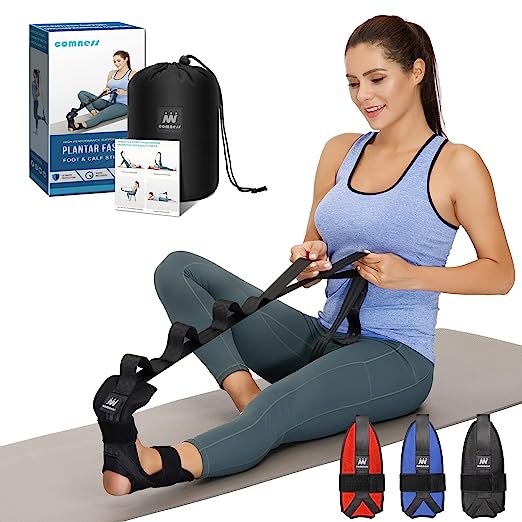
Foot and Calf Stretcher-Stretching Strap For Plantar Fasciitis, Heel Spurs, Foot Drop, Achilles Tendonitis & Hamstring. Yoga Foot & Leg Stretch Strap. (Black)
7. Tailoring Stretching Techniques for Specific Exercises and Sports
Different exercises and sports require specific stretching techniques to maximize performance and prevent injuries. Here are some examples:
- Running: Before a run, focus on dynamic stretching exercises that mimic the movements involved in running. This can include leg swings, high knees, or walking lunges. After running, incorporate static stretches for the major muscle groups involved, such as the calves, quadriceps, and hamstrings.
- Weightlifting: For weightlifting exercises, it’s crucial to warm up the muscles before lifting heavy weights. Incorporate dynamic stretches that engage the muscles you’ll be targeting during your weightlifting session. Afterward, perform static stretches for the muscle groups you worked on, such as the shoulders, biceps, triceps, and chest.
- Yoga: Yoga itself is a practice that incorporates various stretching exercises. During a yoga session, you’ll engage in a combination of dynamic and static stretches that target the entire body. It’s important to follow the guidance of a qualified instructor to ensure proper form and technique.
- Cycling: Cycling predominantly engages the lower body, particularly the quadriceps and hip flexors. Before cycling, perform dynamic stretches such as leg swings or knee raises to warm up these muscle groups. After cycling, focus on static stretches for the calves, hamstrings, and hips to help release tension and promote muscle recovery.
By tailoring your stretching techniques to the specific exercises or sports you engage in, you can optimize your performance, prevent injuries, and enhance your overall fitness experience.
8. The Vital Role of Stretching in Injury Prevention
Injury prevention is a crucial aspect of any fitness routine, and stretching plays a vital role in minimizing the risk of injuries. When you stretch after a workout, you help maintain flexibility in your muscles and joints, reducing the chances of strains, sprains, and other workout-related injuries. By promoting muscle relaxation and lengthening, stretching also helps balance the muscle groups in your body, preventing muscular imbalances that can lead to injuries over time.
Additionally, stretching after a workout helps alleviate muscle soreness and stiffness, allowing you to recover more quickly and resume your fitness activities with reduced discomfort. It aids in the removal of metabolic waste products that accumulate during exercise, helping to flush out toxins and promote muscle recovery.
While stretching alone cannot guarantee complete injury prevention, it is an essential component of a well-rounded fitness routine that includes warm-up exercises, proper technique, and gradual progression. By incorporating stretching into your post-workout routine, you take proactive measures to protect your body and maintain its overall health and functionality.
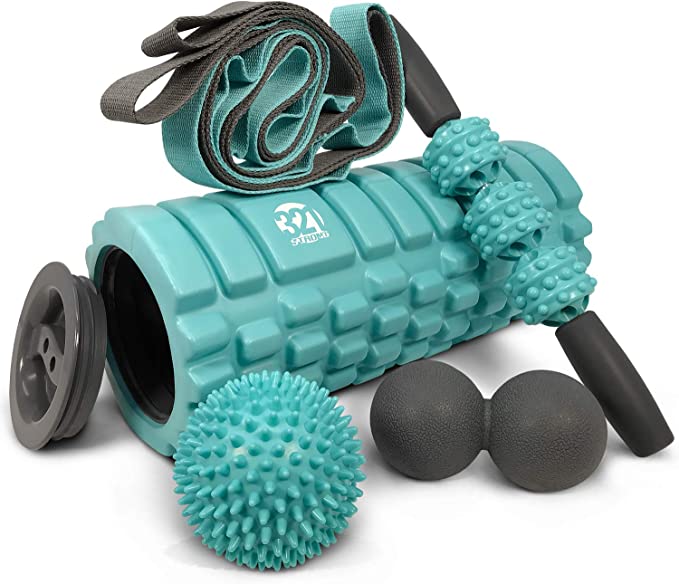
321 STRONG 5 in 1 Foam Roller Set Includes Hollow Core Massage Roller with End Caps, Muscle Roller Stick, Stretching Strap, Double Lacrosse Peanut, Spikey Plantar Fasciitis Ball, All in Giftable Box
9. How Stretching Enhances Flexibility and Range of Motion
Flexibility and range of motion are crucial for performing everyday activities, as well as engaging in physical fitness pursuits. Stretching exercises are key to enhancing both flexibility and range of motion in your muscles and joints.
Regular stretching helps elongate the muscles and connective tissues, allowing them to adapt to new ranges of motion. This leads to improved flexibility, enabling you to move more freely and comfortably. Increased flexibility can also enhance athletic performance by enabling better execution of movements and reducing the risk of muscle strains or tears.
Stretching also targets specific muscle groups, helping to release tension and tightness that may limit your range of motion. By consistently incorporating stretching into your post-workout routine, you can gradually improve your flexibility and expand your range of motion, ultimately leading to improved overall physical function.
10. Relaxation and Stress Relief through Post-Workout Stretching
Stretching after a workout provides an opportunity to unwind and relax both your body and mind. The combination of gentle movements, deep breathing, and focused attention during stretching promotes relaxation and helps reduce stress.
During stretching, you can consciously release tension and let go of any built-up stress from your workout or daily activities. By focusing on your breath and being present in the moment, you create a space for relaxation and rejuvenation. Stretching also activates the parasympathetic nervous system, which is responsible for the “rest and digest” response, leading to a state of calmness and relaxation.
Incorporating mindfulness techniques, such as deep breathing or guided visualization, into your stretching routine can further enhance the relaxation benefits. By taking the time to relax and de-stress after a workout, you support your overall well-being and cultivate a positive mindset.
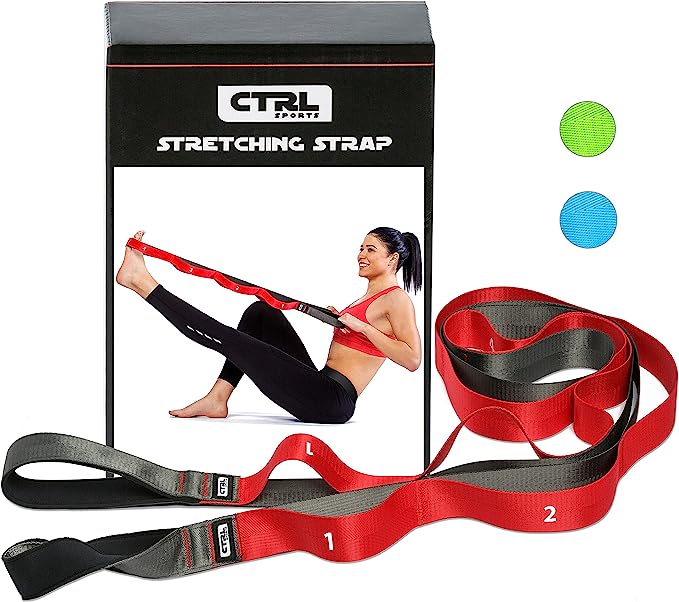
Stretching Strap with Loops – Non Elastic Stretch Band for Physical Therapy, Yoga Strap for Stretching Equipment, Stretch Bands for Exercise and Flexibility – Fascia, Hamstring & Leg Stretcher Belt
11. Improved Blood Circulation: A Key Benefit of Stretching
Stretching exercises have a positive impact on blood circulation throughout your body. When you stretch, you increase blood flow to the stretched muscles, delivering essential nutrients and oxygen that support their recovery and repair processes. This increased blood circulation also aids in the removal of metabolic waste products from the muscles, helping to reduce muscle fatigue and promote quicker recovery.
In addition to enhancing muscle recovery, improved blood circulation through stretching benefits your overall cardiovascular health. By promoting efficient blood flow, stretching supports the health and function of your heart and blood vessels. It can help regulate blood pressure, reduce the risk of cardiovascular diseases, and contribute to improved overall cardiovascular fitness.
So, by making stretching a regular part of your post-workout routine, you not only optimize muscle recovery but also support your cardiovascular health and well-being.
12. Correcting Posture through Regular Stretching Exercises
Poor posture is a common issue in today’s sedentary lifestyle, and it can lead to various musculoskeletal problems. Regular stretching exercises can help correct poor posture by lengthening tight muscles and strengthening weak ones.
Sitting for prolonged periods or engaging in repetitive movements can cause certain muscles to become shortened and tight, leading to postural imbalances. By incorporating stretches that target these specific muscle groups, you can elongate the muscles and gradually improve their flexibility.
Stretching exercises that focus on the chest, shoulders, and upper back can help counteract the effects of hunching or rounded shoulders, which are common in individuals who spend a significant amount of time sitting or working at a desk. Stretching the hip flexors, hamstrings, and lower back can also contribute to better posture by releasing tension and promoting alignment in the pelvis and lower spine.
Regular stretching, combined with strengthening exercises, can help rebalance your musculature and improve your posture over time. By maintaining proper posture, you reduce the risk of chronic pain, enhance your body’s structural alignment, and support optimal physical function.
13. Enhancing Athletic Performance with Dynamic Stretching
Dynamic stretching, which involves incorporating controlled movements while stretching, has been shown to improve athletic performance. It is particularly effective when performed as part of a warm-up routine before engaging in physical activity.
Dynamic stretching helps increase blood flow to the muscles and prepares them for the specific movements involved in your chosen activity. By performing movements that mimic the actions you’ll be undertaking during your workout or sports activity, you activate the muscles and enhance their readiness for action.
Dynamic stretching not only helps increase flexibility and range of motion but also improves neuromuscular coordination and muscular activation. This can lead to more efficient movement patterns, increased power output, and reduced risk of injuries during exercise or sports activities.
Incorporating dynamic stretches that target the muscle groups relevant to your chosen activity can help optimize your athletic performance and contribute to achieving your fitness goals.
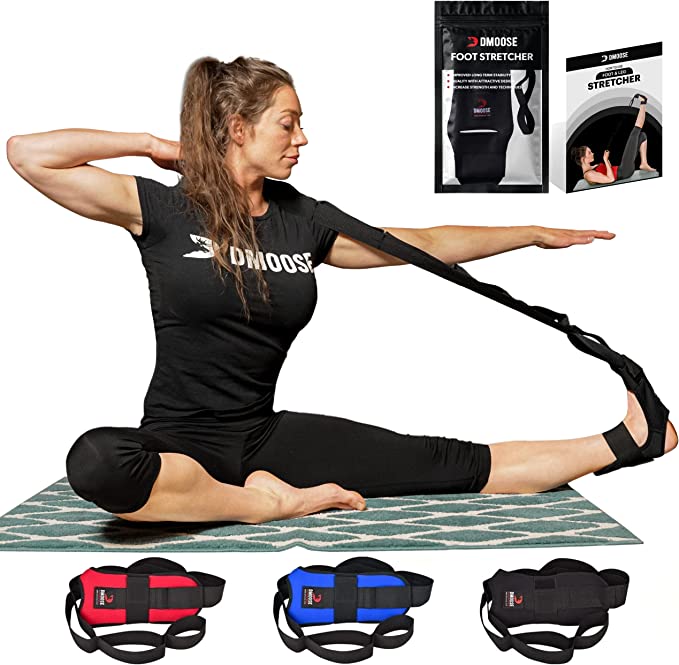
DMoose Calf Stretcher & Foot Stretcher for Plantar Fasciitis – Hamstring Stretcher Stretching Strap for Achilles Tendonitis, Leg Stretcher Ligament Stretching Belt for Pain Relief, Dancers and Yoga
14. Stretching as an Essential Component of Your Cool-Down Routine
Including stretching as part of your cool-down routine is just as important as warming up before a workout. The cool-down phase allows your body to gradually transition from a state of high activity to a resting state, promoting recovery and preventing muscle soreness.
Stretching as part of your cool-down routine helps to relax and elongate the muscles that have been engaged during your workout. By gently stretching the muscles, you encourage blood flow and help flush out metabolic waste products, reducing muscle fatigue and promoting a quicker recovery process.
In addition to aiding in muscle recovery, stretching during the cool-down phase promotes a sense of relaxation and calmness. It allows your heart rate to gradually decrease and brings your body and mind into a state of balance.
By dedicating a few minutes to stretching as part of your cool-down routine, you optimize your post-workout recovery, support muscle repair, and foster a sense of well-being.
15. Conclusion: Emphasizing the Importance of Stretching After a Workout
Incorporating stretching exercises into your post-workout routine is essential for maintaining a healthy and balanced fitness regimen. Stretching offers numerous benefits, including improved flexibility, injury prevention, stress relief, enhanced athletic performance, and relaxation.
By dedicating a few minutes to stretching after each workout, you provide your body with the opportunity to recover, restore balance, and optimize its overall function. Whether you engage in static stretching, dynamic stretching, or a combination of different techniques, the key is to make stretching a regular practice and listen to your body’s needs.
Remember that stretching should never be forced or painful. It should be performed with intention, focusing on proper form, deep breathing, and relaxation. By incorporating stretching into your post-workout routine, you invest in your long-term fitness, well-being, and overall quality of life.
Frequently Asked Questions (FAQs)
How long should I stretch after a workout?
Ideally, you should spend about 10 to 15 minutes stretching after a workout. This timeframe allows for adequate stretching of major muscle groups and promotes relaxation.
Can I stretch before a workout instead?
While light stretching before a workout can be beneficial, dynamic warm-up exercises are generally more effective for preparing your body for physical activity. Save your deeper stretches for after your workout when your muscles are already warmed up.
Are there any specific stretches I should avoid?
It’s important to listen to your body and avoid stretches that cause pain or discomfort. If you have any existing injuries or medical conditions, consult with a healthcare professional or a qualified fitness trainer to determine which stretches are safe and appropriate for you.
How often should I stretch?
Ideally, you should aim to incorporate stretching exercises into your daily routine. Whether it’s after workouts, during breaks, or as a separate dedicated stretching session, consistency is key to maintaining flexibility and reaping the benefits of stretching.
Can stretching help with muscle soreness?
Yes, stretching after a workout can help reduce muscle soreness by increasing blood flow, promoting muscle relaxation, and aiding in the removal of metabolic waste products. However, it’s important to note that stretching alone may not eliminate all muscle soreness, and other recovery methods such as rest, hydration, and proper nutrition should also be considered.
By incorporating stretching exercises into your post-workout routine and customizing them to your specific needs and goals, you can optimize your fitness journey, reduce the risk of injuries, and support your overall well-being.
